This article explains how to rest the Windows Terminal app to its default settings in Windows 11.
Windows Terminal is a modern host application for the command-line shells, including Command Prompt, Windows PowerShell, and bash (via Windows Subsystem for Linux (WSL)).
It supports multiple tabs, panes, Unicode and UTF-8 character encoding, a GPU-accelerated text rendering engine, and theme customization with text, colors, backgrounds, and shortcuts.
When you customize the Windows Terminal app and some things stop working and want to restore its default settings, the steps below will show you how.
The folder below contains all the app settings. To restore the app, delete the file and start again.
%LocalAppData%\Packages\Microsoft.WindowsTerminal_8wekyb3d8bbwe\LocalState\settings.json
There are multiple ways to restore the default settings for the Windows Terminal app. Here are some methods you can use.
Reset the Windows Terminal app
First, open the Windows Settings app.
You can do that by clicking on the Start menu and selecting Settings. Or press the keyboard shortcut (Windows key + I) to launch the Settings app.
When the Setting app opens, click the Apps button on the left.
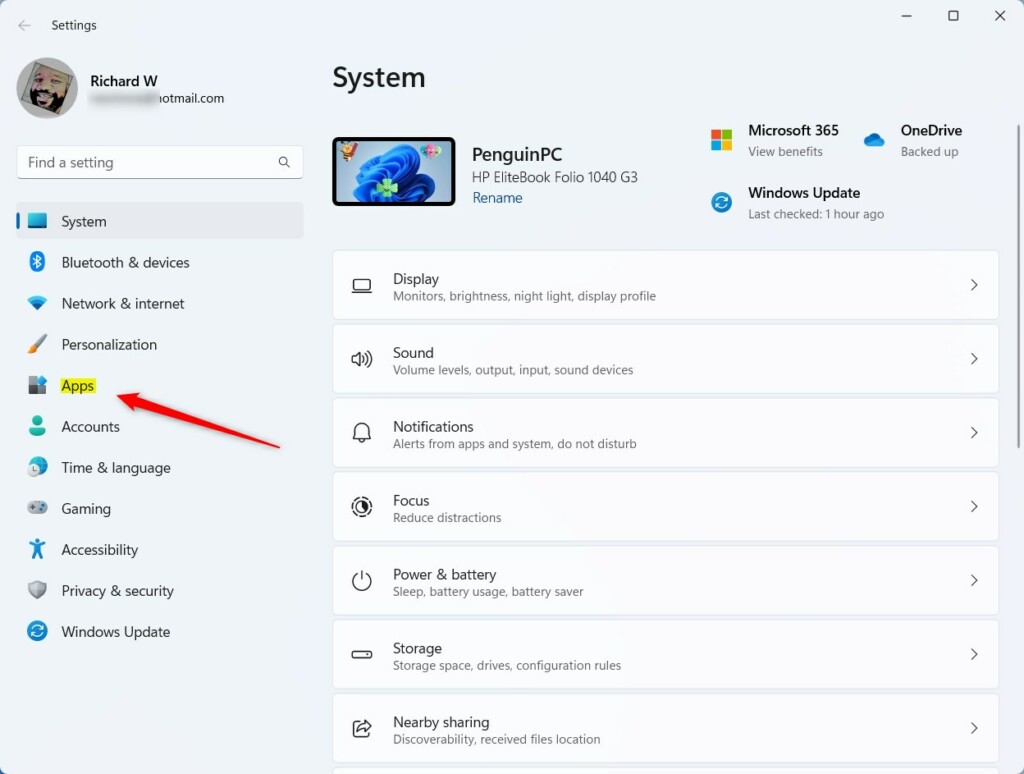
Select the Installed app tile under ‘Apps‘ on the right to expand it.
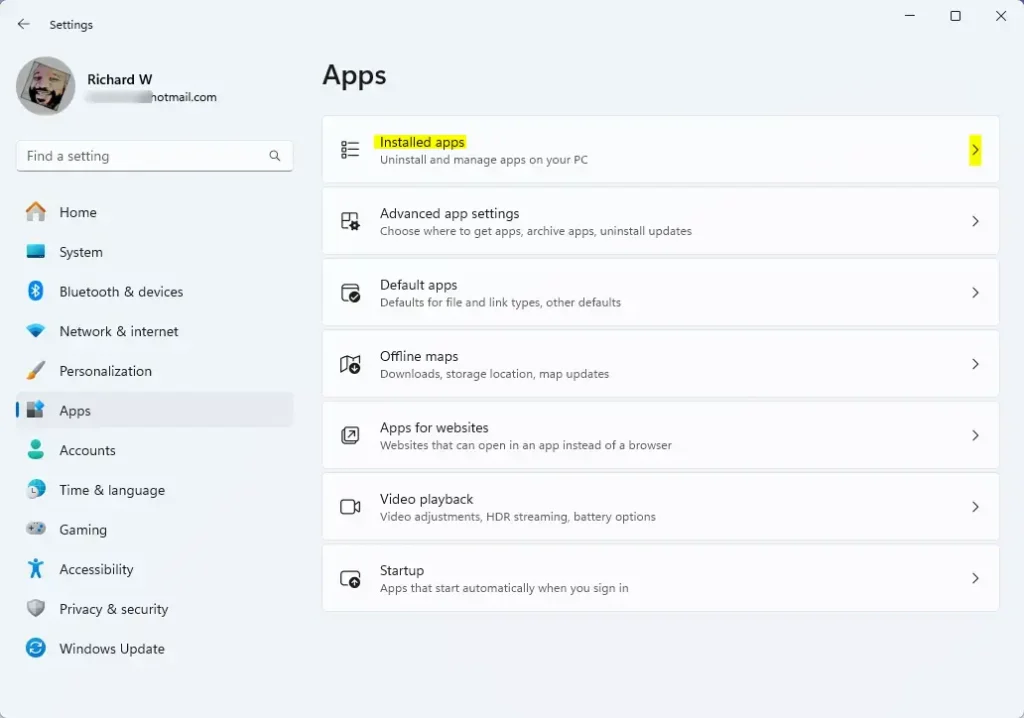
Next, locate the Terminal app and select the Settings and more – > Advanced options.
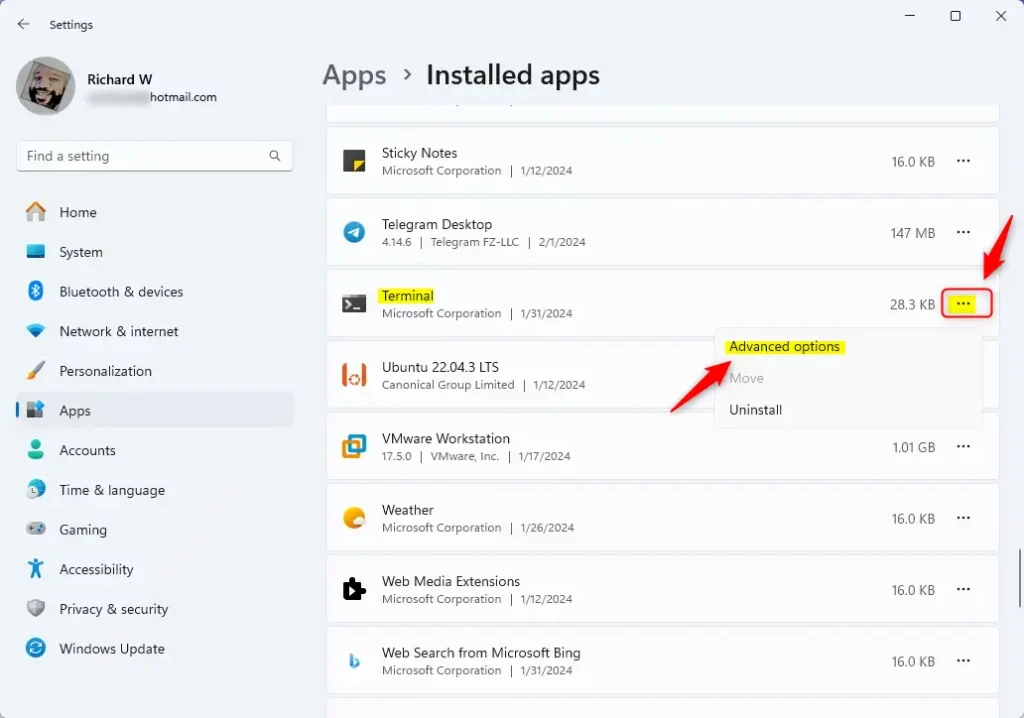
On the Windows Terminal settings page, click the Reset button to restore its default settings.
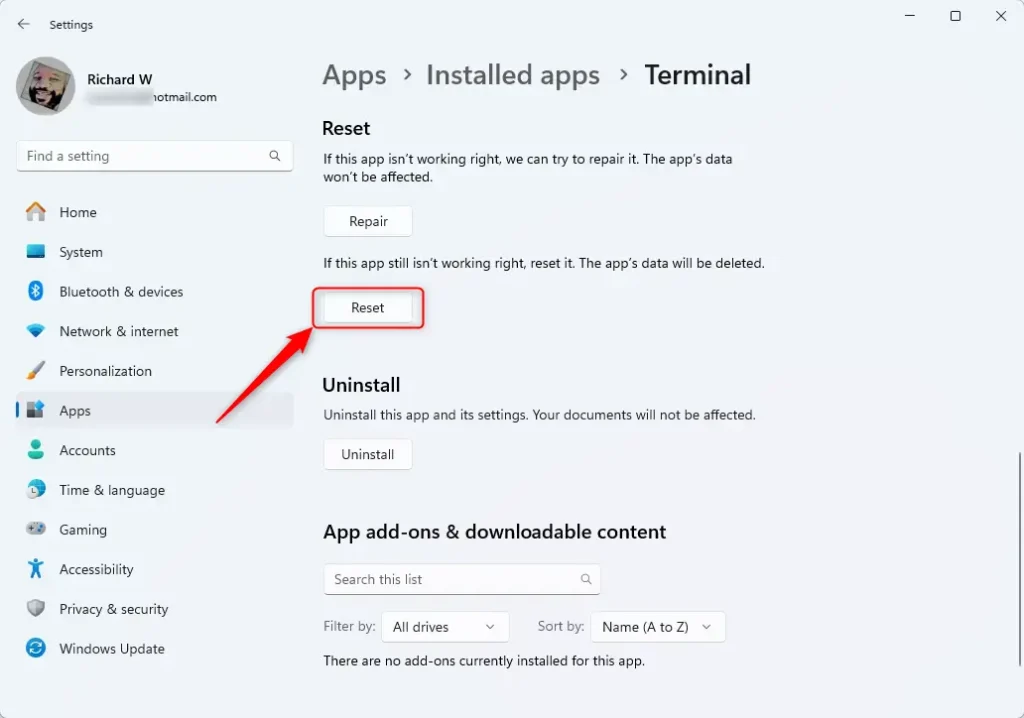
Close the apps when you’re done.
Delete the settings file using the Command Prompt or PowerShell
You can reset the Windows Terminal settings using the command line console. Here’s how.
Using Command Prompt:
Run the command below when using the Command Prompt with Terminal.
del /f /s /q /a "%LocalAppData%\Packages\Microsoft.WindowsTerminal_8wekyb3d8bbwe\LocalState\settings.json"
Using PowerShell:
To use PowerShell with Terminal instead, run the command below.
Remove-Item -Path "$env:LOCALAPPDATA\Packages\Microsoft.WindowsTerminal_8wekyb3d8bbwe\LocalState\settings.json" -Force
Delete the settings file using File Explorer
Finally, you can browse the file’s location using the File Explorer. Then, select and delete it.
Type the path into the File Explorer address bar and press Enter.
%LocalAppData%\Packages\Microsoft.WindowsTerminal_8wekyb3d8bbwe\LocalState
Next, select and delete the settings.json file.
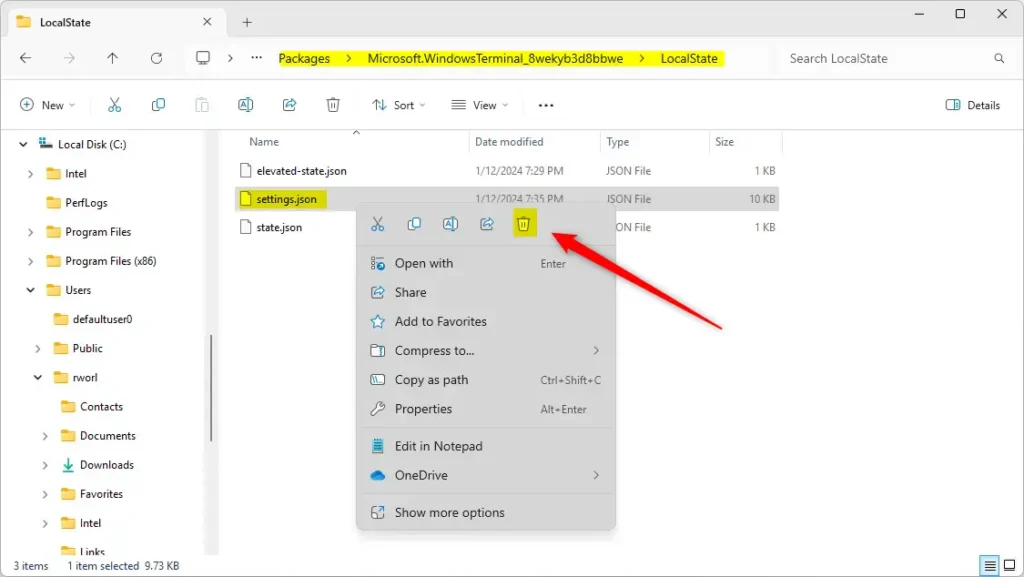
That should do it!
Conclusion:
- Restoring the default settings for Windows Terminal is crucial when customization issues arise. The outlined methods provide a comprehensive approach to resetting the app.
- Users can easily initiate the reset process and restore the Terminal to its default state using the Windows Settings app.
- Command Prompt and PowerShell offer command-line solutions for deleting the settings file, granting users flexibility.
- Leveraging File Explorer provides a straightforward method for locating and deleting the settings file, ensuring a seamless restoration process.
- These steps should effectively restore the Terminal app to its default settings, resolving any customization-related complications.

Leave a Reply Cancel reply